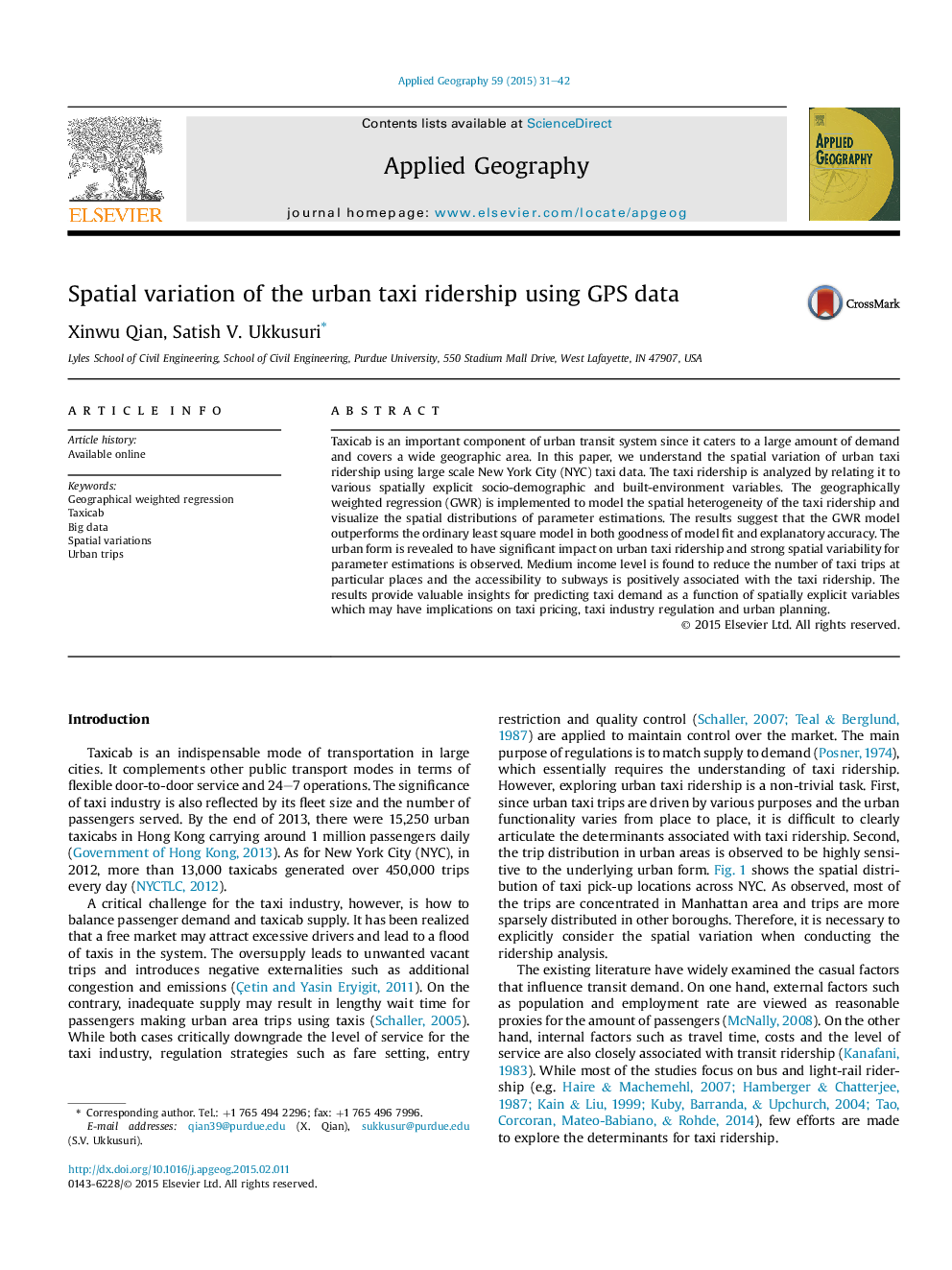| Article ID | Journal | Published Year | Pages | File Type |
|---|---|---|---|---|
| 6538584 | Applied Geography | 2015 | 12 Pages |
Abstract
Taxicab is an important component of urban transit system since it caters to a large amount of demand and covers a wide geographic area. In this paper, we understand the spatial variation of urban taxi ridership using large scale New York City (NYC) taxi data. The taxi ridership is analyzed by relating it to various spatially explicit socio-demographic and built-environment variables. The geographically weighted regression (GWR) is implemented to model the spatial heterogeneity of the taxi ridership and visualize the spatial distributions of parameter estimations. The results suggest that the GWR model outperforms the ordinary least square model in both goodness of model fit and explanatory accuracy. The urban form is revealed to have significant impact on urban taxi ridership and strong spatial variability for parameter estimations is observed. Medium income level is found to reduce the number of taxi trips at particular places and the accessibility to subways is positively associated with the taxi ridership. The results provide valuable insights for predicting taxi demand as a function of spatially explicit variables which may have implications on taxi pricing, taxi industry regulation and urban planning.
Related Topics
Life Sciences
Agricultural and Biological Sciences
Forestry
Authors
Xinwu Qian, Satish V. Ukkusuri,
